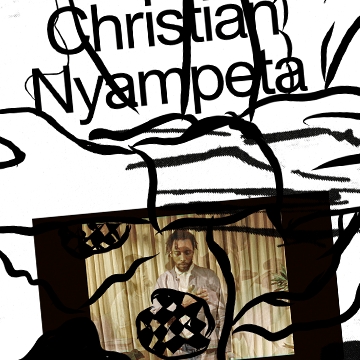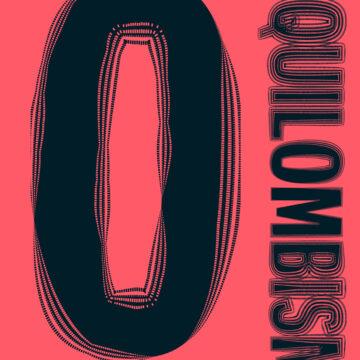The photographer, the wanderer, glides softly in the crush of the everyday, stepping out onto awkwardly paved sidewalks, weaving through crowds, seeking out moments of quiet serendipity. It’s in happenstance, coincidence, that the magic becomes immanent, the constantly weaving, liminal threads taking shape, becoming momentarily visible, forming into occurrences that vibrate, are.
Tag: Art
Majnoon Filed Guide
Majnoon is an oil field in the global south. Majnoon is also the violence, and the state of mind that survives the violence. How can this be a field guide in any customary sense? Latitudes have been taken. Words are written in disruptedor troubled syntax. Rather, this book proceeds alongsidea search for what many call emancipatory practice; to beenacted in the field, where we feel most alive.
Ballet der Massen. Über Fußball und Katharsis / BOM Magazine
Das BOM Magazin, die Publikation zum Projekt Ballett der Massen am Haus der Kulturen der Welt (HKW), greift seltene Perspektiven auf Fußball als Spannungs- und Entspannungsfeld auf.
Ballet of the masses. On Football and Cartharsis / BOM Magazine
The BOM Magazine, the publication for the Ballet of the Masses project at Haus der Kulturen der Welt (HKW), focuses on rare perspectives on football as a field of both tension and relaxation.
ants walk two ways
A collective publication resulting from a research project led by Sophie Orlando and Katrin Ströbel that takes as its starting point the way in which current geopolitical, economic and social changes induce a renewal and adjustment of artistic strategies, by investing, in an intersectional perspective, contextual thinking and feminist, queer and postcolonial thinking in an artistic and conceptual way.
Passage – a song
What do we hear? Can we hear the stories that emanate from the visual information? Are we projecting from our memories or closing our ears to the cries? Can we hear the noise of the place or the deafening silence? What is the sound we hear in silence?
Entangled – Texts On Textiles
What does it mean to be a curator who writes, and, more specifically,
how can curators write about textiles?
Echoes of the Brother Countries Reader
The Echoes of the Brother Countries Reader embarks on a rigorous reappraisal of the historical exchanges between the German Democratic Republic (GDR) and its so-called Bruderländer (brother countries). Published on the occasion of the eponymous research and exhibition project at Haus der Kulturen der Welt (HKW), this reader considers the echo as a fulcrum to examine the resonant aesthetic, social, and political implications of an era from the perspectives of those who were deeply affected by the GDR’s state and labour policies, yet gravely overlooked in its histories.
Echos der Bruderländer Reader
Der Reader zum Projekt Echos der Bruderländer versucht eine Aufarbeitung des historischen Austauschs zwischen der Deutschen Demokratischen Republik (DDR) und ihren sogenannten ‚Bruderländern‘. Die Publikation, die anlässlich des gleichnamigen Forschungs- und Ausstellungsprojekts im Haus der Kulturen der Welt (HKW) erscheint, versteht den Begriff des Echos als Dreh- und Angelpunkt, um die ästhetischen, sozialen und politischen Implikationen einer Epoche aus der Perspektive derjenigen zu untersuchen, die von der Staats- und Arbeitspolitik der DDR zutiefst betroffen waren, aber in der Geschichte der DDR kaum wahrgenommen werden.
Togetherward
Togetherward is a volume assembling new and existing documents that revisit, mix and remix moments in the work of artist Christian Nyampeta. The volume is composed of material that exceed singular authorship, in the form of texts, images, film stills, footnotes, photographs, poetry, and translations.
As though we hid the sun in a sea of stories / Als hätten wir die Sonne verscharrt im Meer der Geschichten
Accompanying the exhibition As Though We Hid the Sun in a Sea of Stories, this reader weaves together essays, conversations, and poetry that trace the multiplicity of worldviews, histories, and archives that have existed within an area of Central and Eastern Europe, Central and North Asia, and further beyond.
O Quilombismo Album
Beyond thinking with quilombismo as a metaphor, O Quilombismo: Of Resisting and Insisting. Of Flight as Fight. Of Other Democratic Egalitarian Political Philosophies. deliberated on the intellectual and political implications of a philosophy and ideology based on the quilombos, mapping the spaces that they have made and continue to make possible today. Featuring over 100 full colour images and installation views, the O Quilombismo Album is a visual record of these acts of opening again, a celebration of conviviality.
O Quilombismo Handbook
The O Quilombismo Handbook is an indispensable companion to the eponymous exhibition. It includes background information on and numerous images of all exhibited works, texts providing further insight into the practice of the participating artists, as well as floor plans and sketches of the exhibition spaces. Two introductory essays provide context for the philosophy of quilombismo and the conceptual framework of the exhibition.
O Quilombismo Handbuch
Das O Quilombismo Handbuch ist die unentbehrliche Begleitpublikation zur gleichnamigen Ausstellung. Darin finden sich Werkinformationen und Abbildungen aller gezeigten Arbeiten, vertiefende Informationen zu den beitragenden Künstler*innen sowie Lagepläne und Skizzen der Ausstellungsräume. Zwei einleitende Essays führen in die Philosophie des Quilombismo und das Konzept der Ausstellung ein.
K̶-Artists
There has been a recent surge of global interest in Korean arts and popular culture, as evidenced by neologisms such as K-pop, K-drama and K-classic. Korean contemporary art has also captured the attention of a growing number of international biennales, exhibitions and fairs, attracting an international audience to Korea’s local artists and the scene they comprise. This is where our questions begin: despite a growing sense of nationalism in the global political stage, through a post-postmodernist lens, national categorization appears anachronistic. Is the prefix ‘K’ then a mere political ploy and capitalist commodity? If ‘K’ were to be removed, on the other hand, how else might we attempt at providing a portrait of the changing currents in Korea’s art scene? Is collective categorization or generalization ever worthwhile, and if so, to what extent can it be done without reducing or marginalizing individuals?
O Quilombismo Reader (DE)
Der Reader zum Projekt O Quilombismo: Von Widerstand und Beharren. Von Flucht als Angriff. Von alternativen demokratisch-egalitären politischen Philosophien, wendet sich an Leser*innen mit Interesse an den konzeptionellen Hintergründen und den kuratorischen Linien der Ausstellung: Auflehnung, Befreiung, Spiritualität, Ekstase, neue kulturelle Formen und ästhetische Paradigmen, Interpretationen von Kollektivität und Quilombo als Queering.














